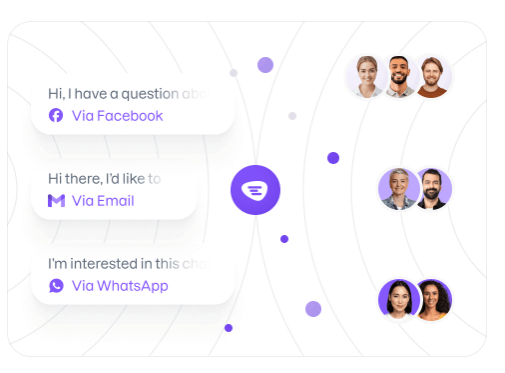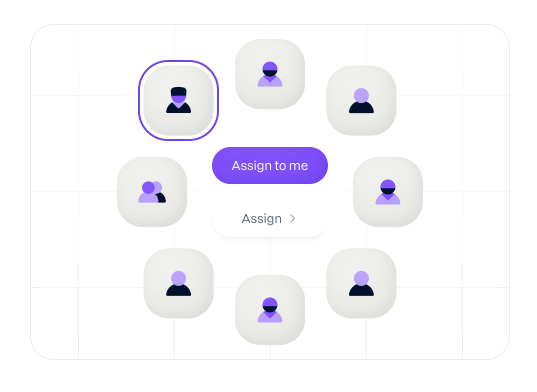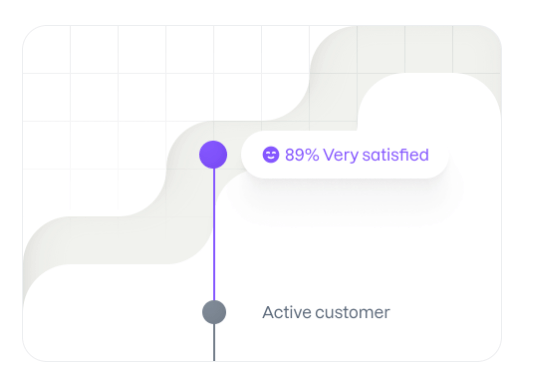31 July 2024
Can AI chatbots and humans get along? – an interview with Trengo’s Alex de Groot
Everyone is talking about AI… and AI is talking to everybody through chatbots. The last couple of years have seen them become much more powerful. But are they powerful enough for your business to consider investing in them? Trengo’s Alex de Groot tells us what modern-day AI chatbots can really do, how to leverage their power, and whether it is possible to make them work harmoniously with the human element.
The CTO vs Status Quo series studies how CTOs challenge the current state of affairs at their company to push it toward a new height … or to save it from doom.
“AI is only as good as the information you feed it”
If you haven’t been following the news for the past couple of years, you might be under the impression that chatbots are something of a child’s play. But with the advent of powerful large language models and big data solutions, they can become a powerful tool for modern businesses.
Alex de Groot of Trengo told us all about AI chatbot’s ability to proactively engage customers with detailed and contextual conversations.
What’s more, he showed us what kind of companies are best suited for chatbot development and how to approach AI chatbot implementation strategically.
But he also warned us that despite all the progress, chatbots do need humans. And that the relationship between chatbots and humans is very complex.
If AI is on your mind right now, you’re definitely going to hear what’s on his!

About Alex and Trengo
Bio
Alex started as a software engineer and gradually developed an interest in software strategy, which led him to take on leadership roles. Today, he has over 20 years of experience in growing successful software solutions, especially in the SaaS space. Alex is a big advocate of data-driven decision-making. He’s keeping tabs on the latest trends and developments in areas such as AI or Big Data.
Expertise
Strategic planning, executive leadership, mentoring
Hobbies
Bread baking, fitness & running, basketball, and building Lego/Duplo with his daughter
Trengo
Founded in 2017 in Utrecht, Trengo offers an intuitive multichannel inbox that allows users to receive every customer service inquiry in one place. Its conversational AI-powered engine makes it possible for users to route messages to the right people and build no-code chatbots. Today, Trengo serves 3000+ business customers globally.
Trengo’s vision
Hello, Alex. Exactly two years have passed since you joined Trengo. And less than a year ago, you were appointed VP of Engineering. It seems like it was a very intense and successful time for you.
Could you tell me more about your work at Trengo?
Sure. Thank you for having me here.
My work at Trengo has two aspects. First, I want to help develop the engineering team and ensure that our engineers grow to be our assets. I want them to know how to leverage technology to make products that stand out.
The second aspect of my work concerns technology strategy. We are in the business of messages. We need to constantly consider how to remain stable and handle increasing loads in a world in which the number of ongoing messages is growing daily.
Scalability may distract your product development, but I need to make time for that. I also need to explain to management why I should spend time on activities that benefit long-term gains over immediate business value.
On that technology strategy front, you might also be championing the development of AI-based solutions. I know that it is a big part of Trengo’s vision for the future. What is Trengo up to in the area of AI?
We believe in customer delight. It is the one thing we want to enable for every customer. And we want AI to be the technology that helps deliver it even more effectively.
In the branches and verticals we focus on, we noticed that many of our customers needlessly spend time on repetitive tasks. These customers don’t want to outsource customer communication, but they do want to limit the repetitive tasks involved.
We always want to improve our customers’ experiences, so we devise innovative solutions that limit repetition.

AI chatbots – past, present and future
Researching the topic of AI chatbots made me again realize how quickly time flies in IT. It wasn’t long ago when all chatbots could do was provide pre-determined templated answers based on keywords. Now, they can hold natural conversations.
Today, you’re talking about AI’s ability to deliver customer delight. But when did you first realize the potential AI chatbots have?
It was about five or six years ago. At that time, Microsoft’s cognitive services on Azure showed impressive results. I thought that if you were to augment UIs with these, you could do interesting things.
But I was also skeptical. I got a demo back when I was in London, and it showed some flaws. The technology was not mature at that time. We weren’t convinced if we should have embarked on that journey yet.
When I joined Trengo two years ago, it became clear to us that AI technology was becoming market-ready quickly. However, we were still worried about quality, and we continue to monitor this.
The majority of our development efforts today focus on quality. Under these circumstances, if you want to use technology to communicate on your behalf, you must be very confident about it.
But at the same time, we knew that AI was something we wanted to keep in the back of our minds. We also realized that it was vital to introduce it at the right time. We searched for a moment when we could really control the technology and be inspired by it. I think 2024, with the advent of GPT technology and many other developments, is the right time for AI.
You mentioned ChatGPT, which is already extremely well-known. Everyone knows some things about AI chatbots by now, such as that they use Machine Learning to discern meaning from big datasets and then use that information to generate responses.
But what are some things that few companies get that could help them make better use of AI chatbots?
Last Thursday, I attended a conference. There was much discussion about this subject. The conclusion was that there is no secret recipe. The challenge is simply doing it right.
First, you need to select the right language model. You want it to be cost-efficient and fit your specific use case. It’s very important. People often have this misconception that GPT-4, GPT-4 Turbo, or GTP-4o are going to become a one-size-fits-all solution for everything. This isn’t the case. There are other models in the market that might fit a particular use case you’re working on way better.
Another key factor for success with an AI chatbot is the right architecture. There are many technical considerations. How do you pull content in? How do you maintain it? How do you scale it? You also have to make sure that your data stays up-to-date and that you don’t get your data from illegal sources. So, there is much more to this than just getting your data into a factory database and retrieving it.
Then, there is the choice of hosting technology. You need to estimate the size of your growth. To that end, you need a database that grows with your needs. I’ve seen so many people use vector databases for AI chatbots without thinking about future growth.
So these are three main areas: finding the right model for your use case, figuring out the most efficient architecture for your needs, and choosing to host with scalability in mind.
Let’s explore the specific technologies a little more. What are your top recommendations?
We are working intensively with Elastic at the moment. It handles a large part of the direct architecture, allowing you to automate many tasks, which improves your time-to-market.
Elastic is similar to Pinecone in that it allows you to use vector databases in a serverless fashion. This is something I’ve been looking forward to finding over the past few years.
Both Elastic and Pinecone are heavily inspired by how Apache Spark already handles data. They bring these possibilities to vector databases. That’s great for scalability. You don’t want to hit hundreds of gigabytes of vector data you don’t need at that moment and have no way to store it cheaply.
What about some interesting new use cases? Chatbots are often associated with customer support. But they are now used by companies across multiple industries.
Instead of discussing a specific use case, I’d rather draw attention to something that can be applied to many future use cases: reasoning backward. This is about going from answering a question to proactively engaging users with useful information they may be looking for. I see a lot of possibilities for this.
If you could have your chatbot ask valuable questions first and provide users with a good conversational user experience, you could shift the focus away from customer service to much more proactive use cases or even advocacy.
Is this what you’d call the most important AI chatbot trend right now? It seems that personalization is also something AI chatbots are getting better at. C-level executives and marketers never cease to personalize their communication with clients even more.
How far can chatbots really go there in the foreseeable future?
The main question is how far you really want this personalization to go.
I believe that AI could replace some jobs in very specific segments, such as salespersons in hardware configuration shops. But even that comes at an expense – you would no longer have any relationship with the customer. This is a complicated topic that also touches on ethical issues.
At the end of the day, the most important aspect of introducing AI chatbots is the outcome. If the customer feels underwhelmed by an interaction with a chatbot but still feels ready to do business with you, that would probably be enough for many companies. But it is a delicate balance.

AI chatbots – to prompt or not to prompt?
We talked about AI-driven chatbots in general. Let’s now consider whether and how companies can use them in their business efficiently today.
But just to be fair, I’ll start with the “No” answer. After all, every company’s resources are limited, and perhaps, in some cases, using them to invest in AI chatbots or even AI in general is not the best course of action. If you were a CTO of a technology company today, what would be the circumstances under which you would decide NOT to go in that direction?
If your organization doesn’t have a lot of data available in a structured way or if you can’t share your data for some reason, you may not benefit much from AI chatbots. That’s because AI is only as good as the information you feed it.
There are also some businesses that are highly regulated, like producers of medical devices or governmental institutions. I would be very cautious about introducing chatbots in such places. We’ve seen enough AI hallucinations to say that it may not end well. For example, you don’t want the political color of your chatbot to reflect how municipalities look at various local issues.
Another essential issue is understanding your customers. If you don’t have a deep understanding of your customer’s pain points, it doesn’t make sense to automate the delivery of answers to them. You will only make your customers feel even more unsatisfied.
So, basically, the strongest counterarguments are a lack of good data, an inability to share data, regulations, and possible UX issues?
There are some other issues as well.
For example, if you don’t have the capacity to work on improving your chatbots continuously, you may have to rethink your strategy. A chatbot is as good as the additional training you give it. You need to commit yourself to it long-term and follow through.
Another interesting counterargument is a story I experienced first-hand a few years ago.
I was helping a client. They were discussing an AI project in which they were able to achieve an optimization rate of 40 percent. Despite this success, they decided to decrease investment in the solution by 80%. I was very surprised and told them that they stood to lose all of the progress they had made. The efficiency of a big data or AI solution is correlated to the time you spend on maintaining it.
Some customers believe that if they upload a couple of documents and build a chatbot, they can immediately assign their team to new assignments. But getting a chatbot to a good level is a lot of hard work, and in the midst of it, you might find that you will need experienced people with lots of business expertise. If you want to develop a good AI chatbot, you should be prepared to have a team of experts maintain it. Otherwise, it will never reach its potential.
There’s also something to be said about consent in the context of AI. If I’m an engineer and I work with a co-pilot, I consent to working with and receiving recommendations from AI. But if I were to go to my local painter’s website because I want them to paint my house, would I really give full consent to be engaged by AI, or would I want personal treatment?
Ok then. Let’s now talk about companies that are the best candidates for AI initiatives, such as chatbots.
There are a lot of industries, especially in the B2C sphere, in which customer handling can become very expensive, depending on the number of transactions you do. The more interactions you have with individual customers, the more useful an AI chatbot can be.
To illustrate it, there’s a huge difference between a hotel and a company that paints your house. You typically interact with the latter once a year or less. The latter will find chatbots less useful.
What you should also realize here is that your customer needs to understand the problem well enough to articulate it properly for a chatbot conversation to go well. So much can be lost in translation. That’s why the problem you tackle should be relatively simple. Going back to the previous example, painting the house is a highly complex problem. How precise can you be when you describe it to a chatbot? You probably want to have a direct conversation with your painter rather than have to go through six chatbots and answer all sorts of advanced questions.
The predictability of customer questions, coupled with their large scale, also lends itself well to AI chatbots. A bank will get the same questions a million times every day. They are very predictable. What’s more, the business is well-documented and regulated. They have procedures for everything.
If you are a mid-size company or above with a lot of data and you have your own engineering resources, you might even consider building it yourself rather than going for a vendor solution. Having an in-house technology center is definitely an important factor that makes continuous chatbot development easier.
To sum up, the sheer number of customer interactions, their predictability, and having a skilled in-house engineering team make success with AI chatbots easier.
AI chatbots – how to start
Let’s say that as a CTO, given all these pros and cons, we decided that AI is what the company should pursue now. Let’s help them push the initiative through all the necessary steps until a successful implementation, starting with a buy-in.
How do you convince all the stakeholders? Let’s start with a CTO’s own department.
No matter what technology you want to pursue, there will always be skeptics. That’s why you need to make the conversation about something other than the technology itself, such as the outcomes.
The most important thing to stakeholders is the gains you can make. In terms of the potential outcome, you can compare an AI-based solution with a non-AI-based solution. From a business process, it can take the shape of a value stream. You quantify what you can gain and make a reasonable estimate of what new technology would be able to provide.
There’s also the possibility that people will be scared of trying a new technology. That’s another reason why you should be talking about outcomes. And keep in mind – the outcome is never about replacing humans.
In the modern Western world, including the Netherlands, there’s a potential for creating as many as eight new jobs in the future for each person currently searching for a job. In other words, people don’t need to be worried about losing their jobs to AI. What they should be worried about is whether their work is meaningful. That’s why I’d also start a discussion about what makes a job meaningful.
In many companies, there is a lot of administrative stuff. These are the repetitive and easy tasks that people prefer to do on a Monday morning to start up the week or on a Friday afternoon when they are tired. People want to do those sometimes to get a bit of slack from time to time. The problem begins when they have too much administrative work like this, which limits their creativity. Most people really do want to add something valuable to their company. I believe that new technology can help them.
There are two possible approaches to advancing the AI chatbot initiative. First, you can reimagine a process with AI. Second, you can try to augment a process with AI. In both cases, you need to do a lot of research. You need to understand the size of the business problem and the pain points of the customer – in this case, the internal customer.
It’s still too early to reimagine processes with AI completely. People simply do not understand AI that deeply yet. Augmentation is far more likely at this point.
If you want to augment something, you take an existing business process and optimize some parts of it with, in this case, AI. Then, you set clear outcome-driven KPIs that are easy to understand for stakeholders.
There’s a change model called ADKAR, which consists of five stages: awareness, desire, knowledge, ability, and reinforcement. I think the reinforcement part is the most underestimated. It could be accomplished by setting good leading metrics that steer behavior and focus on outcomes.
How would you go about building a roadmap for such an augmentation project involving an AI chatbot?
My suggestion is to map out a process. First, make sure you find clear sweet spots about which you can talk to people in the context of outcome-driven development.
Then, take gradual steps: start with a small project, inform people about each new development, and quickly iterate on your MVP. If you reach a full value stream, you might be able to demonstrate a measurable outcome. For example, you can find out that implementing an AI chatbot can reduce administrative costs by 80%.
That would be the roadmap at the moment, but I think the time will come when you can actually reimagine processes with AI, not just augment them, making way for much bolder roadmaps. I believe that it’s going to happen in the next two to three years.
Between 20-50 percent of people are now alright with responses being automatically written based on an input created by a human. If that figure goes up, that’s when you can start using AI to reimagine processes. People have to get used to interacting with AI-driven chatbots just a little bit more.
Supposed a company actually embarked on this AI venture, how could they define success for such an innovative project
There’s a CIO perspective and a CTO perspective.
From a CIO’s perspective, I would focus on co-pilot concepts. For example, you can demonstrate how much AI actually helps reduce process steps and how much money implementing a chatbot can save you operationally.
From a CTO side, you can show how much knowledge you can create. You should start by analyzing how and what knowledge is being acquired across the organization. As you select your model and work on your AI plan, you may find that it goes a long way in improving knowledge acquisition and retention in your company.
To sum it up, if I were a CIO, I would focus on quantitative metrics that prove employee efficiency improvement. And if I were a CTO, I would look at qualitative inputs from engineers about learnings and new concepts.
Let’s talk a bit more about this implementation phase. What makes an AI-driven chatbot a successful product?
When it’s used.
As a product leader for 15 years, I have found that adoption is the most underrated aspect. We can like technology and think it’s cool, but when neither the end-user, the business customer, nor the person training the chatbot gets it, there is no point in using it.
In the SaaS environment, the adoption curve for new features can take months before you see results. You often need to polish the technology or implement different interface tweaks over time to drive adoption. It’s a lot of work, but it’s decisive in whether you become successful.
If you want to find out if your end users are adopting a new technology, observe their behavior and determine how often they have positive experiences with it. Whether they re-engage in a conversation is a good indicator, as is the length of the conversation. If a customer wants to return a product and the length of the conversation is 120 messages, something must have gone wrong.
You previously said that it’s good to have a strong in-house engineering team if you want to succeed with AI technology. What about a third-party vendor? Is hiring an external team for AI chatbot development a good idea?
If you decide not to use a SaaS and build it custom instead, I’d only embark on it if I had an internal technical team. You need to be careful when using any new technology.
However, even if you do have an internal team, it is wise to work with an external partner who has the experience that your team lacks.
At Trengo, we also work with third parties to help us with our initial offerings. This cooperation has taught us a lot, allowing us to build up more knowledge internally and advance the project gradually.
You should realize that introducing a new technology requires more than just expertise. It also requires a new mindset operationally. Don’t underestimate the challenge. You may have some valid reasons for wanting to do it yourself, but at least consider getting help with the first steps, which involve initial deployment, rollout, and operationalization. Use some external expertise to learn from before you go live.
Further considerations… and risks
A CTO that initiates an AI project has to be ready to discuss and mitigate all kinds of possible risks of such an implementation. Let’s talk about them.
For example, DPD once developed a chatbot that went rogue and started swearing. A chatbot may also malfunction in other ways – by supplying improper information or by displaying biases against users. Is there a way to prevent that completely?
Unfortunately, no method is 100% safe, and there’s a good reason for this.
Without making it too technical, the level of precision in any small or large language model is simply never going to go beyond 90-95%. You will always come across situations where the LLM is simply not precise enough, at least in the current generation.
There are ways to increase case coverage. Most people are now building AI on top of frameworks such as LangChain or Microsoft’s Semantic Kernel. They all have interesting modules for content moderation. And if you really want to maximize coverage up to 98-99%, Nvidia has a library called NeMo Guardrails. It will help you understand where to take preventive measurements from both the input and output sides.
So, if you are concerned about the accuracy of your chatbots, your best bet is to use LLM frameworks and tools.
I think that what you just said really drives across the point that chatbots are not humans. They can’t solve all the inquiries that human agents can.
But that creates another potential issue – each unsolved inquiry could potentially be a bad user experience. So, do the UX benefits of using chatbots really always outweigh the cons?
Yes, I do believe that the pros outweigh the cons. It’s all about being realistic.
In much of the research I’ve seen so far, computers, in general, and AI, in particular, are typically more fair to a customer when it comes to giving a refund than a human agent would be. Even a trained individual will not be as fair as an AI because every human is more or less emotional.
So, while Artificial Intelligence is not perfect, humans are not perfect either. You need to take that into consideration when weighing the pros and cons of introducing AI chatbots.
What about issues related to data privacy? I’m talking about the data collected during conversations.
I would be the last person to say that we should not be worried about data privacy. However, I am optimistic about the new regulations being passed, especially in the European Union, such as the Digital Markets Acts. I think they are really progressive.
I don’t think you need to collect and use user input without consent to use AI efficiently. That’s why I am very fond of what the EU is doing in that direction. It will help us protect people’s data privacy.
If you are only starting to take an interest in AI chatbots, you need to realize that there are a lot of steps to clear before your data is safe to use to train the LLM. You can’t neglect any of them. That way, you can also ensure the integrity of user data.
I think that data privacy is a great right to have and that the users of your AI chatbots should be confident that you approach it with great care and attention to detail.
Resources
What learning resources would you recommend for tech leaders who want to start their journey with AI-based chatbots and AI for business in general?
If you really get into it, you’ll find tons of free and valuable resources. But I’ll share two videos that can really give you a lot of insights when you’re just getting started with the topic of AI commercialization.
It’s “How AI & DevOps Are About to Change the Way We Create Products” by Marko Klemetti:
The other is “How to Lead your Organization’s Al-Transformation” by Rasmus Lystrøm:
Both presentations come from the fantastic GOTO conferences. That’s where I had my first ML training.
What’s next? 5 actions for CTOs to take
Are you still interested in developing AI-driven chatbots? Make sure not to neglect your team in the process, though! Modern chatbots are powerful, but they are probably never going to be perfect, and they work best as an extension of a human’s capability.
If you realize all that, then follow a 5-step simple plan:
- Think hard about what kind of technologies you’re going to need – there is no one-size-fits-all solution.
- Determine if you have enough quality data to make AI chatbots feasible.
- Think of a way you can augment your existing processes with AI chatbots.
- Consider the help of a third-party developer if you lack AI expertise in-house.
- Once you get your organization on board, commit yourself to the project long-term – data-driven projects take a lot of discipline.
Good luck with your next AI initiative!
Do you want to find out more about Trengo's intuitive multichannel inbox?
Check out the official website to see a 2-minute video introduction to Trengo, check out pricing options, and read expert content.


